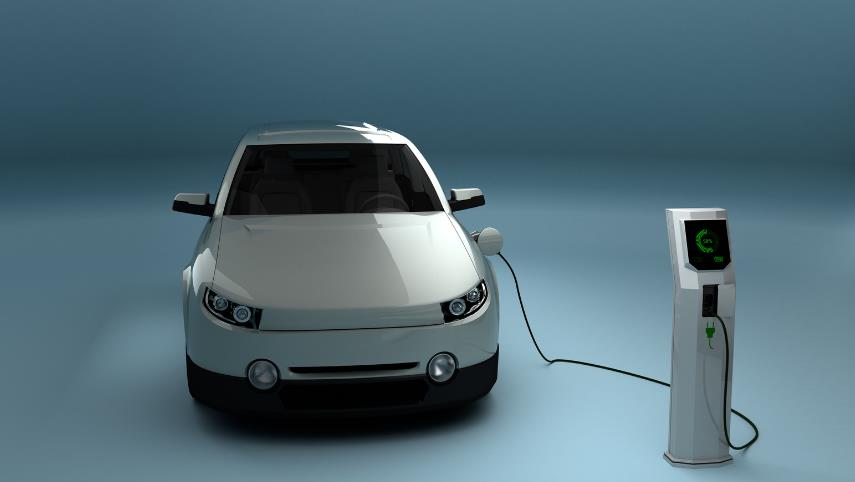Direct debits have become a convenient way to automate payments, ensuring bills are paid on time without manual intervention. In the UK, most people link their direct debits to their bank accounts, but what if you prefer using a credit card instead?
Many people wonder whether they can set up a direct debit on a credit card to manage payments efficiently while also earning rewards or cashback.
In this guide, I’ll explore whether this is possible, the alternatives available, and what you should consider before using a credit card for recurring payments.
What Is a Direct Debit and How Does It Work?

A direct debit is an automated payment method that allows businesses or organisations to collect money directly from a customer’s bank account. It is widely used for bills, subscriptions, loan repayments, and other recurring payments.
Direct debits work through the following process:
- The customer authorises a company to collect payments from their bank account.
- The company submits a request to the bank to withdraw the agreed amount on the specified date.
- The bank transfers the funds automatically without requiring manual intervention from the customer.
- The Direct Debit Guarantee protects customers by ensuring that any incorrect or unauthorised transactions are refunded.
Direct debits are generally preferred for recurring payments because they offer a hassle-free and secure way to pay regular bills without the risk of missing a due date.
However, they are strictly linked to bank accounts and cannot be set up directly on a credit card.
Can You Set Up a Direct Debit Using a Credit Card in the UK?
In the UK, it is not possible to set up a direct debit on a credit card. The direct debit system is designed to process payments from current or savings accounts rather than credit accounts.
Credit cards operate differently, as they are not linked directly to a customer’s available cash but rather to a credit limit provided by the card issuer.
Despite this limitation, some companies allow recurring payments via credit cards. These payments are not classified as direct debits but as Continuous Payment Authorities (CPAs).
CPAs function similarly to direct debits but are charged to a credit card instead of a bank account. They are commonly used for:
- Streaming services such as Netflix, Amazon Prime, and Spotify.
- Subscription services, including magazines and software subscriptions.
- Gym memberships and fitness-related services.
- Insurance premiums for travel, car, or health insurance.
While CPAs provide flexibility for recurring payments, they do not offer the same level of protection as direct debits.
Customers who wish to cancel a recurring card payment must contact the service provider or their credit card issuer, whereas direct debits can be cancelled directly through a bank.
What Are the Alternatives to Direct Debit on a Credit Card?

Since direct debits cannot be linked to a credit card in the UK, individuals looking for automated or recurring payment solutions must consider alternative methods.
These alternatives offer varying levels of convenience, security, and control over finances. Some may provide similar automation to direct debits, while others require manual intervention.
1. Standing Orders
A standing order is an instruction given by an account holder to their bank to send a fixed amount of money to another account at regular intervals.
Unlike direct debits, which are controlled by the company receiving the payment, standing orders are managed entirely by the payer.
How Standing Orders Work:
- The payer sets up the standing order by specifying the amount, frequency, and recipient’s bank details.
- Payments are made automatically at the scheduled times (e.g., monthly, weekly, or annually).
- The payer has complete control over the payment and can modify or cancel it at any time.
When to Use Standing Orders:
- Ideal for fixed recurring payments, such as rent, mortgage repayments, or transferring money to a savings account.
- Not suitable for payments that vary in amount, such as utility bills, because the amount does not change automatically based on the bill.
2. Recurring Card Payments (Continuous Payment Authority – CPA)
A recurring card payment, also known as a Continuous Payment Authority (CPA), is an arrangement where a company is authorised to charge a customer’s credit or debit card at regular intervals. This method is the closest alternative to a direct debit on a credit card.
How Recurring Card Payments Work:
- The customer provides their credit card details to the service provider.
- Payments are processed automatically on the due date, similar to a direct debit.
- Unlike standing orders, the amount can be variable, making it useful for subscriptions or utilities.
When to Use Recurring Card Payments:
- Commonly used for subscription-based services, such as Netflix, Amazon Prime, or software services.
- Suitable for insurance premiums, gym memberships, and online streaming services.
- Works well for customers who prefer using a credit card to earn rewards or cashback on recurring expenses.
Key Differences Between CPAs and Direct Debits:
| Feature | Continuous Payment Authority (CPA) | Direct Debit |
| Payment Source | Credit or debit card | Bank account |
| Control Over Payments | Merchant controls payments | Bank controls payments |
| Payment Amount | Can be fixed or variable | Can be fixed or variable |
| Cancellation Process | Must be cancelled via merchant or bank | Can be cancelled directly with the bank |
While CPAs provide flexibility, they do not offer the same level of protection as direct debits.
For instance, direct debits come with a Direct Debit Guarantee, ensuring refunds in case of errors, whereas CPAs require customers to dispute incorrect charges with their bank or credit card provider.
3. Bank Transfers
A bank transfer is a manual or automated process where money is sent from one account to another. Unlike direct debits or CPAs, bank transfers are not automatic unless set up as standing orders.
How Bank Transfers Work:
- Customers initiate payments manually via online banking, mobile banking apps, or in-person at a branch.
- Payments can be made as a one-time transaction or scheduled in advance.
- Requires the payer to ensure the correct amount is sent on time.
When to Use Bank Transfers:
- Best suited for one-off payments, such as paying a tradesperson or making an irregular bill payment.
- Useful for sending money between personal accounts or paying off credit card balances.
Since bank transfers require manual action, they may not be the best choice for customers who prefer fully automated payments to avoid missed deadlines.
4. Manual Bill Payments
Manual bill payments require customers to actively log into their account and pay each bill when it becomes due. This method provides the highest level of control but also requires effort to track due dates and make timely payments.
How Manual Bill Payments Work:
- The customer receives a bill notification and must log in to the provider’s website or bank account to complete the payment.
- Payment can be made using a debit card, credit card, or bank transfer.
- No automation means the payer must ensure bills are paid on time to avoid penalties.
When to Use Manual Bill Payments:
- Suitable for people who prefer full control over each payment.
- Useful for irregular payments, such as occasional medical bills or ad hoc service charges.
- A good option for those who frequently change service providers and do not want to set up automated payments.
The downside of manual payments is the risk of forgetting due dates, which could lead to late fees, service disruptions, or penalties.
5. Direct Credit Card Payments to Service Providers
Some companies allow customers to pay bills directly using a credit card instead of linking a bank account for direct debits. This option is different from CPAs, as the payment is processed as a standard card transaction rather than an ongoing authorisation.
How Direct Credit Card Payments Work:
- The customer logs into their service provider’s website and chooses credit card as the payment method.
- Payment is processed immediately, similar to making a purchase at a store.
- The transaction appears on the customer’s credit card statement like any other purchase.
When to Use Direct Credit Card Payments:
- Ideal for earning credit card rewards, such as cashback or travel points.
- Suitable for service providers that do not charge extra fees for credit card transactions.
- Good for occasional payments rather than ongoing automated billing.
Considerations for Using Credit Cards for Bill Payments:
- Some service providers charge an extra fee for credit card transactions to cover processing costs.
- Interest charges apply if the credit card balance is not cleared in full by the due date.
- It can impact credit utilisation, which may affect a customer’s credit score.
Choosing the Best Alternative Based on Your Needs
Each alternative payment method offers its own set of advantages and limitations. Choosing the best option depends on factors such as payment flexibility, security, automation, and potential costs.
| Alternative | Best For | Automation Level |
| Standing Orders | Fixed recurring payments (e.g., rent, savings transfers) | Fully automated |
| Recurring Card Payments (CPAs) | Subscription-based services, insurance premiums | Fully automated |
| Bank Transfers | One-off payments, money transfers between accounts | Manual or scheduled |
| Manual Bill Payments | Occasional payments, full control over transactions | Manual |
| Direct Credit Card Payments | Paying bills with a credit card for rewards | Manual or automated |
Understanding the differences between these payment methods allows individuals to make informed choices based on their financial goals and convenience preferences.
For those who prefer automation, standing orders or recurring card payments may be the best options, whereas those seeking greater control might opt for manual payments or direct credit card transactions.
Which Companies Allow Payments via Credit Card Instead of Direct Debit?

Although direct debits must be linked to a bank account, certain companies allow customers to make recurring payments using a credit card. These include:
- Utility providers – Some electricity, water, and gas providers permit credit card payments, but additional fees may apply.
- Streaming services – Companies like Netflix, Disney+, and Apple Music accept recurring credit card payments.
- Mobile phone networks – Providers such as EE, Vodafone, and O2 allow customers to pay monthly bills with a credit card.
- Insurance companies – Some insurance providers, including those offering car and travel insurance, accept credit card payments for monthly premiums.
Before switching to a credit card for regular payments, it is advisable to check whether the service provider charges extra fees. Many businesses add transaction charges for credit card payments to cover processing costs.
What Are the Benefits and Risks of Using a Credit Card for Recurring Payments?
Using a credit card for recurring payments offers several advantages, but it also comes with potential drawbacks.
Benefits of Using a Credit Card for Recurring Payments
- Rewards and Cashback – Many credit cards offer rewards points, cashback, or airline miles for transactions, making it possible to earn benefits on recurring expenses.
- Improved Cash Flow – Payments do not immediately reduce the available bank balance, allowing better financial management.
- Fraud Protection – Credit card transactions are often covered by fraud protection policies, reducing the risk of unauthorised charges.
- Flexibility in Payment Timing – Unlike direct debits, which are withdrawn immediately, credit card payments allow a grace period before the balance needs to be paid.
Risks of Using a Credit Card for Recurring Payments
- Interest Charges – If the credit card balance is not paid in full by the due date, interest charges can accumulate, increasing overall costs.
- Risk of Overspending – Since payments are not immediately deducted from a bank account, it can be easier to spend beyond one’s means.
- Possible Extra Fees – Some service providers charge additional fees for credit card transactions.
- Cancellation Challenges – Cancelling a recurring credit card payment may require direct communication with the service provider, unlike direct debits, which can be stopped through the bank.
How Can You Set Up Recurring Payments on Your Credit Card?
If a company allows recurring payments via credit card, setting it up is relatively straightforward. The process typically involves the following steps:
- Check eligibility – Confirm with the service provider whether they accept credit card payments for recurring charges.
- Access the payment settings – Log into the service provider’s website or mobile app and navigate to the payment section.
- Enter credit card details – Provide the card number, expiry date, and CVV code.
- Select payment frequency – Choose whether the payments should be processed monthly, quarterly, or annually.
- Confirm and activate – Verify the details and activate the recurring payment option.
It is advisable to monitor transactions regularly to ensure payments are being processed correctly and to avoid unexpected charges.
What Should You Consider Before Using a Credit Card for Automatic Payments?

Before setting up recurring payments on a credit card, it is important to consider the following factors:
- Credit Limit – Ensure that the recurring payments do not exceed the available credit limit, as this could lead to declined transactions or additional fees.
- Interest Rates – If the credit card balance is not paid in full, interest charges may accumulate, making the payments more expensive in the long run.
- Processing Fees – Some businesses charge extra for credit card transactions, so it is important to check for any additional costs.
- Financial Management – Using a credit card for automatic payments requires responsible financial management to avoid accumulating debt.
If the credit card is paid off in full each month, using it for recurring payments can be a convenient and rewarding option. However, for those who carry a balance, direct debits from a bank account may be a safer and more cost-effective choice.
FAQs
Can I pay my utility bills through my credit card in the UK?
Some utility providers allow credit card payments, but they may charge a processing fee.
What is the difference between direct debit and recurring card payments?
A direct debit is taken from your bank account, while a recurring card payment is charged to your credit card.
Do credit card companies charge extra for recurring payments?
Most credit card issuers do not, but some service providers may add a fee for using credit cards.
Can I cancel a recurring payment on my credit card?
Yes, you can cancel a recurring payment by contacting the service provider or your credit card issuer.
Are there any credit cards that support direct debit setups?
No, direct debits must be linked to a bank account, not a credit card.
Is it better to use a debit card instead of a credit card for automatic payments?
It depends on your financial situation. Debit cards prevent debt accumulation, while credit cards offer rewards and protection.
How does using a credit card for recurring payments affect my credit score?
It can improve your credit score if payments are made on time, but missed payments can negatively impact it.



































